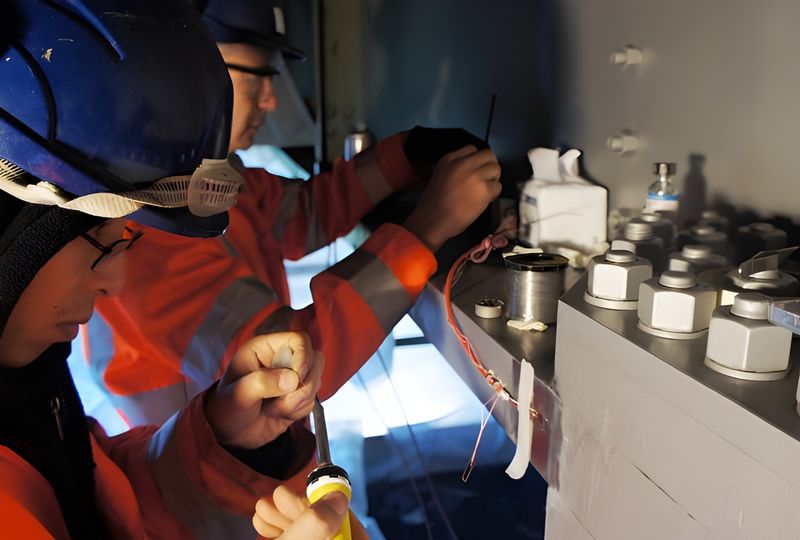Ensuring the security and longevity of infrastructures is essential in this time of outdated facilities and ever-changing stresses from the environment. In this attempt, structural movement monitoring has shown to be a crucial instrument, offering current insight into the movement of dams, construction sites, bridges, and other important structures. This article explores the importance of structural movement monitoring, the various methods it takes, and the imaginative thinking that promotes progress in this field.
Comprehending Structural Movement
Monitoring structural movement requires following and evaluating alterations to the positioning or layout of infrastructure parts regularly. These modifications may be an indicator of a variety of items, including possible collapse, deformity, motion, and settling. Engineers can gather data to assess the stability and operation of infrastructure components by using detectors and monitoring systems.
The Significance of Monitoring Structural Movement
- Assurance of Safety
The main goal of structural movement monitoring is to boost safety by spotting possible deviations from planned activity. Quickly responding and completing repairs when movement variations are noticed early.
- Asset Management
Data from structural movement monitoring can be beneficial for management of assets strategies. Agencies may increase asset life expectancy, enhance scheduled upkeep, and more effectively use expenditures by knowing how infrastructure pieces react to various scenarios.
- Risk Reduction
Natural disasters, factors related to the environment and outdated facilities are just a few of the risks that affect the owners and operators of infrastructure. Through the detection of weaknesses and the adoption of suitable mitigation techniques, structural movement monitoring facilitates proactive risk prevention.
Techniques for Monitoring Structural Movement
- Monitoring via Geodetic
Geodetic techniques make use of sophisticated methods of surveying to track variations in the position and positioning of facilities. These methods include surface methods of surveying like total station instruments and Global Navigation Satellite Systems (GNSS) like GPS. Long-term monitoring of huge structures is suited for geodetic monitoring, offering outstanding accuracy.
- Remote Sensing
Large-scale structural movement monitoring is created by technology for remote sensing like Synthetic Aperture Radar (SAR) and Light Detection and Ranging (LiDAR). The aforementioned techniques can be especially helpful for having an eye on subsidence, landslides, and terrain modification.
- Instrumentation in-situ
Installing sensors immediately on or inside the framework facilitates accurate measurement of various parameters including motion, strain, and displacement. The method is known as “in-situ instrumentation.” The accelerometers, strain gauges, tilt meters, and displacement gauges are typical in-situ monitoring instruments. These sensors are crucial to recognizing localized architectural motions and offer immediate information.
Revolutionary Approaches Increasing Advancement
- Networks of Wireless Sensors
Structure movement monitoring can be achieved more cheaply and effectively with the use of wireless sensor networks (WSNs). Regional sensors in these systems connect remotely to a central monitoring station. With the real-time monitoring tools that WSNs offer, structural changes may be responded to rapidly.
- Analytics for Big Data
The widespread utilization of sensor data contributed to the rise of analytics for big data methods for analyzing structural movement. A lot of data can be handled by advanced analytics computer programs, which then use the irregularities, patterns, and trends found in the data to help make choices and maintain forecasting.
- AI and machine learning
Structural movement monitoring is going through an evolution due to machine learning and artificial intelligence (AI), which make finding anomalies and forecasting easier. These methods are able to identify violations from usual circumstances and forecast future behaviour based on past information.
Studies of Cases
- The iconic Golden Gate Bridge
To keep its strength and protection, the famous Golden Gate Bridge in San Francisco has a precise structural movement monitoring system. The device uses an assortment of remote sensing, in-situ, and geodetic methods to track strain, relocation, and vibrations caused by the wind, among other variables.
- The Three Gorges Dam
One of the best hydroelectric power plants on the planet, the Three Gorges Dam in China, utilizes progress observing innovation to watch out for its underlying strength and recognize expected dangers. Engineered Gap Radar (SAR) and satellite symbolism are utilized to screen the seismic movement brought about by springs and landscape improvement.
The Challenges and Opportunities for the Future
Even with structural movement monitoring‘s accomplishments, a number of difficulties continue to be solved such as combining data, cybersecurity issues, and interoperability of monitoring systems. Going ahead, these issues must be handled and the success of monitoring methods improved through continuous development and research.
Conclusion
Accolade measurement, which offers data on the strength of the structure, use instruments to measure dislocation or pressure in structural movement monitoring. They assist maintenance and safety inspections by facilitating in finding of signs of variations from normal behavior. For essential infrastructure items to remain safe, flexible, and long-lasting, structural movement monitoring is crucial. Manufacturers and authorities may proactively discover and decrease risks by utilizing cutting-edge monitoring technologies. Inventive approaches, eventually protecting equipment and the people that depend on it.
